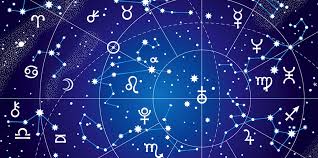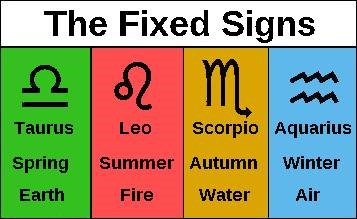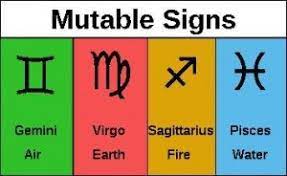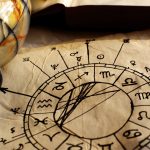The birth chart analysis considers four essential components: the planets (including the Sun and the Moon), the Aspects formed between them, the Houses, and the signs. The position of the planets on the chart corresponds to their movement in degrees, minutes, and seconds at the time they were born. In the center of the birth chart, some lines appear. These lines are the Aspects and reflect the Angles formed between them.
The Angles (AC, DC, MC, and IC) in the Astral Chart
The astral chart is divided into 12 Houses, which constitute the "where" of Astrology, the different spheres of life where planetary energies act. The Houses are influenced by the sign at the top (the line separating the signs and the Houses from each other) and by the planets inside.
The Aspects are drawn on the birth chart as lines, connecting the planets "in aspect," that is, the planets that "observe" each other from their positions on the chart. Aspects are divided into groups: positive, negative, and weak or less (as opposed to powerful/strong or greater).
The Angles, closely related to the Aspects, function as "frames" that guide the way.
They correspond to the four points that form a cross within the birth chart: Ascendant, Descending, Midheaven, and Background of Heaven.
These four points correspond to House 1 to House 7 and from House 4 to House 10, respectively. The planets positioned in these Houses have the most force in their birth chart. They form the basis of your astral personality
. The subsequent division of these quadrants into three parts creates the cusps of the inner Houses and the twelve Houses.
-
Ascendant (AC) - Sunrise:
It corresponds to the sign that rises on the eastern horizon at the time of birth (point located to the right of the observer looking north). It marks the beginning of the cusp of House 1 and is the gateway to any horoscope.
The degree opposite the Ascendant, ascending on the western horizon. It represents the cusp of the 7th House.
-
Midheaven ( Medium Coeli, Zenith, or MC):
The meridian of the birthplace, marking the point in the sky immediately above us. Represents House 10 (in the Placidus House system).
-
Fund of Heaven ( Imum Coeli, Nadir, or IC):
Point of the meridian opposite the MC, marking the point in the sky immediately below us. Represents House 4.
Angles in the Horoscope and in the Astral Chart
A birth chart is a tool that allows us to know the most striking personality traits: who we are, how we think, and why we behave in a certain way in certain situations. The Ascendant, the Descendant, the Midheaven and the Background of the Sky are fundamental elements in the interpretation of the chart.
Rising Sign
The Ascendant (AC) symbolizes the face that we present to the world and our characteristics. It is the first thing that others see in us or that we see in them. The Ascendant is considered one of the most important points in the birth chart.
It marks the beginning of House 1. Ruled by Aries and Mars, it is the starting point of any horoscope. This Angle can only be calculated if the birth time is known, and the more accurate this information is, the more precise the birth chart will be.
All 12 signs rise on the eastern horizon in 24 hours, and therefore the sign of the Ascendant change every two hours. However, thanks to the phenomenon called Short Ascension or Long Ascension, some signs pass on the horizon faster than others.
In the Northern Hemisphere, the fastest rising signs are the first and last, Aries and Pisces, with the signs on either side gradually increasing in speed. Libra and Virgo are the slowest rising ones. To the north, Gemini and Capricorn are Short Ascension and Cancer, and Sagittarius are Long Ascension signs. This pattern is reversed at south latitude.
SHORT (OBLIQUE) ASCENSION: THE SIGNS REMAIN LESS THAN ONE HOUR ON THE EASTERN HORIZON
- In the Northern Hemisphere - Aries, Taurus, Gemini, Capricorn, Aquarius, Pisces
- In the Southern Hemisphere - Cancer, Leo, Virgo, Libra, Scorpio, Sagittarius
LONG ASCENSION: THE SIGNS REMAIN TWO TO THREE HOURS ON THE EASTERN HORIZON
- In the Northern Hemisphere - Cancer, Leo, Virgo, Libra, Scorpio, Sagittarius
- In the Southern Hemisphere - Aries, Taurus, Gemini, Capricorn, Aquarius, Pisces
Descending Sign
The Descendant (DC) marks the beginning of the 7th House, the House of relationships and social harmony, ruled by Libra and Venus. It is the opposite of the Ascendant, which rises on the western horizon. While the rising sign represents "I," the descending sign represents "You." It reflects everything we seek in others, in all types of relationships (business partner, spouse, friendship).
Midheaven or Zenith
The Midheaven ( Middle Coeli, Zenith, or MC) corresponds to the meridian of the place of birth. That is, it marks the part of the sky that was directly above us at the moment of birth.
In the Placidus House system, the MC always marks the 10th House cusp, ruled by Capricorn and Saturn, but can vary with the Equal House system. This Angle is marked as an arrow in some horoscopes, pointing to the heavens.
The Midheaven symbolizes where we are going, vocations, aspirations, and ambitions. It represents our social life, reputation, profession, social status, and public image. It presents our goal in life: where we want to go and what we will do to fulfill that purpose. It can symbolize parental or social influence in building our future.
Sky Background or Nadir
The Sky Background ( Imum Coeli, Nadir, or IC) corresponds to the meridian point opposite the MC, marking the point in the sky immediately below us at the moment of birth.
It marks the beginning of the 4th House, ruled by Cancer and the Moon. This House symbolizes the origins and family ancestry, being associated with the home, childhood, the soul, and the roots of who we are.
It represents the inner face of our personality. It is our "Inner Self." This Angle also represents the final resting place. The Sky Background points out our personality and character's negative and positive points.

The Degrees of Angles in Astrology
When we were born, the stars occupied a particular position in the heavens. The Angles mark this position, thus allowing the planets to be positioned on the chart. It is possible to study how they interact with each other.
Each planet's degree in the House(s) shows which planets are closer or further apart. Knowing this information, it is possible to study how the energy charges of the planet influence each other.
Any star in Conjunction, Opposition, Square, or Trine with a planet must be considered in the study of the chart. The Conjunction is the most important influence of all. If a planet in progression or Angle creates an Aspect with a fixed star, its impact will be felt and interpreted with the remaining advancements.
Conjunction 0º
When the planets are separated from 0º to 10º / 12º, they are in Conjunction when they occupy the same or almost the same degree. This relationship unites the planetary energies that work well when the planets are harmonious. When the planets are incompatible, it causes stress. If the orb is narrow, the energy of one planet could be supplanted by that of the other.
Sextile - 60º
When the planets are 60º apart, it has the geometric shape of a polygon with 6 equal sides. It is considered beneficial, facilitating, with great potential. However, it can create tension if the energy is not released. This aspect occurs only between signs with the same polarity: male signs sextile with male signs, and female signs sextile with female signs.
The sextile always occurs between the following signs:
- Aries with Gemini
- Gemini with Leo
- Leo with Libra
- Libra with Sagittarius
- Sagittarius with Aquarius
- Taurus with Cancer
- Cancer with Virgo
- Virgo with Scorpio
- Scorpio with Capricorn
- Capricorn with Pisces
POLARIDADE NEGATIVE, FEMALE, PASSIVE OU YIN
It indicates that the personality of the sign is introverted and receptive. The signs in this category belong to the Water and Earth triplicities: Taurus, Virgo, Capricorn, Cancer, Scorpio, and Pisces.
POLARIDADE POSITIVE, MALE, ACTIVE OU YANG
It indicates that the personality of the sign is outgoing and expressive. The signs in this category belong to the Air and Fire triplicities: Aries, Leo, Sagittarius, Gemini, Libra, and Aquarius.
Quadrature 90º
When the planets are 90º apart (Right Angle), an aspect represents tension, in which the planets conflict with each other. This aspect can pose a challenge or impose a solution. Depending on the planets involved, it can have an energizing effect or cause conflict or blockage.
Irritation, anxiety, lack of harmony between what one thinks and what one does, the excessive need for control, physical or psychological violence, depression are possibilities. But the Square in Astrology also represents the motivation to overcome difficulties or the desire for personal improvement.
The quadrature is formed by opposite and non-opposite signs, which belong to the same Quadruplicity (Modes or Modalities): Cardinal (or Cardinal), Fixed, and Mutable.

Cardinal signs that square each other:
- Aries with Cancer
- Cancer with Libra
- Libra with Capricorn

Fixed signs that square each other:
- Taurus with Leo
- Leo with Scorpio
- Scorpio with Aquarius

Mutable signs that square each other:
- Gemini with Virgo
- Virgo with Sagittarius
- Sagittarius with Pisces
CARDINAL QUADRUPILICIDE
It represents the energy that flows in a straight line: it includes the signs that begin the seasons (equinoxes and solstices): Aries, Cancer, Libra, Capricorn. The cardinal signs begin the quadrants of the signs in the Astral Chart. This personality needs to initiate changes for things to work. They are the most active, proactive, and enterprising signs of the Zodiac.
FIXED QUADRUPLICATE
It represents stagnant energy, which resists change: it includes the signs that fall in the middle of the seasons: Taurus, Leo, Scorpio, Aquarius. These signs resist change, preferring a rigid routine and a regulated and stable lifestyle. The fixed personality wants everything to stay the same, nothing to change, forever.
MUTABLE QUADRUPLICATE
It represents the changing energy carried by the current: it groups the signs that coincide with the end of the seasons: Gemini, Virgo, Sagittarius, Pisces. These signs value versatility mutability and adapt quickly and easily to the environment's needs. They have a hard time keeping up with routine and boredom quickly when things get too quiet.
Trine 120º
When the planets are 120º apart, the Trine always occurs between signs that belong to the same triplicity ( Fire, Earth, Air, Water ). The Trine suggests harmony between the planets involved, and their connection is beneficial. It represents luck, tranquility, wealth, and growth. However, this ease may reflect a certain lack of commitment since it does not require effort, and depending on the topics, there may be no valuation in them.
The trigone always occurs between the following signs:
- Aries with Leo
- Leo with Sagittarius
- Sagittarius with Aries
- Taurus with Virgo
- Virgo with Capricorn
- Gemini with Libra
- Libra with Aquarius
- Cancer with Scorpio
- Scorpio with Pisces
180º opposition
When the planets are 180º apart (ground angle), the Angle between the two planets forms a straight line. This position suggests a close relationship between the planets and energetic harmony between them.
Regardless of the planets involved, the opposition occurs naturally between signs of the same polarity (Male and Female) and of the same modality ( Cardinal, Fixed and Mutable ):
- Aries opposes Libra - both signs are masculine and cardinal and share the same Polarity and Modality
- Taurus makes opposition with Scorpio - same polarity and modality: because both signs are feminine and Fixed
- Gemini opposes Sagittarius - same polarity and modality: because both signs are male and Mutable
- Cancer makes opposition with Capricorn - same polarity and modality: because both signs are feminine and Cardinal
- Leo makes opposition with Aquarius - same polarity and modality: because both signs are masculine and Fixed
- Virgo opposes Pisces - same polarity and modality: because both signs are female and Mutable
Other aspects include the Middle Sextile (30º), the Semicuadrature (45º), the Sesquiquadrature (135º) and the Quincuncio (150º).
How is the calculation of the angles carried out?
The horoscope circle is divided into four quadrants. These form the Angles in the birth chart: the main axes. Each quadrant is divided into three generating the 12 Astrological Houses, or divisions, of the horoscope. The first step in calculating the Angles is to determine which sign is at the top (the beginning of each House) and to what degree.
The Summits of the Astrological Houses
The cusps mark the beginning of each House and are recorded according to grade. There are twelve cusps, which correspond to the beginning of each of the twelve Houses.
Learn more about the Houses in Astrology and what they say about your personality, and how to interpret the different elements of the Astral Chart.




